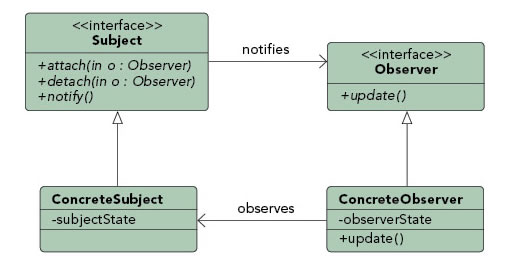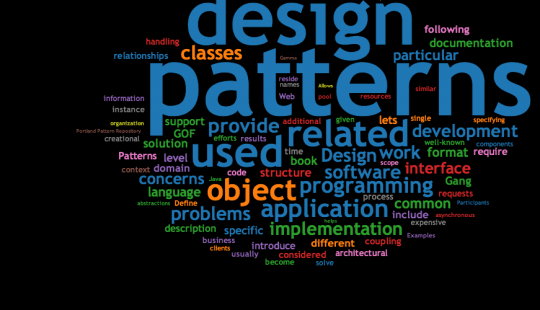- The 23 Gang of Four Design Patterns (Cheat Sheet)
Abstract Factory
Design Patterns There are numerous ways to structure the code and project for your web application, and you can put as much or as little thought as you like into architecting. But it is usually a good idea to follow common patterns because it will make your code easier to manage and easier for others to understand. Design patterns are solutions to software design problems you find again and again in real-world application development. Patterns are about reusable designs and interactions of objects. The 23 Gang of Four (GoF) patterns are generally considered the foundation for all other patterns. They are categorized in three groups: Creational, Structural.
- Provide an interface for creating families of related or dependent objects without specifying their concrete classes.
Adapter
- Convert the interface of a class into another interface clients expect. Adapter lets classes work together that couldn’t otherwise because of incompatibility interfaces.
Bridge
- Decouple an abstraction from its implementation so that the two can vary independently.
Builder
- Separate the construction of a complex object from its representation so that the same construction processes can create different representations.
Chain of Responsibility
- Avoid coupling the sender of a request to its receiver by giving more then one object a chance to handle the request. Chain the receiving objects and pass the request along the chain until an object handles it.
Command
- Encapsulate a request as an object, thereby letting you parameterize clients with different requests, queue or log requests, and support undoable operations.
Composite
- Compose objects into tree structures to represent part-whole hierarchies. Composite lets clients treat individual objects and compositions of objects uniformly.
Decorator
- Attach additional responsibilities to an object dynamically. Decorators provide a flexible alternative to subclassing for extending functionality.
Façade
- Provide a unified interface to a set of interfaces in a system. Façade defines a higher-level interface that makes the subsystem easier to use.
Factory Method
- Define an interface for creating an object, but let the subclasses decide which class to instantiate. Factory Method lets a class defer instantiation to subclasses.
Flyweight
- Use sharing to support large numbers of fine-grained objects efficiently. A flyweight is a shared object that can be used in multiple contexts simultaneously. The flyweight acts as an independent object in each context; it’s indistinguishable from an instance of the object that’s not shared.
Interpreter
- Given a language, define a representation for its grammar along with an interpreter that uses the representation to interpret sentences in the language.
Iterator
- Provide a way to access the elements of an aggregate object sequentially without exposing its underlying representation.
Mediator
- Define an object that encapsulates how a set of objects interact. Mediator promotes loose coupling by keeping objects from referring to each other explicitly, and lets you vary their interaction independently.
Memento
- Without violating encapsulation, capture and externalize an object’s internal state so that the object can be restored to this state later.

Software Design Patterns Cheat Sheet Template
Observer
- Define a one-to-many dependency between objects so that when one object changes state, all its dependents are notified and updated automatically.
Prototype
- Specify the kinds of objects to create using a prototypical instance, and create new objects by copying this prototype.
Proxy

- Provide a surrogate or placeholder for another object to control access to it.
Singleton
Web Design Cheat Sheet
- Ensure a class only has one instance, and provide a global point of access to it.
State
- Allow an object to alter its behavior when its internal state changes. The object will appear to change its class.

Strategy
- Defines a family of algorithms, encapsulates each one, and make them interchangeable. Strategy lets the algorithm vary independently from clients who use it.
Template
- Define a skeleton of an algorithm in an operation, deferring some steps to subclasses. Template Method lets subclasses redefine certain steps of an algorithm without changing the algorithms structure.
Visitor
- Represent an operation to be performed on the elements of an object structure. Visitor lets you define a new operation without changing the classes of the elements on which it operates.
What are Design Patterns?
Design patterns are solutions to software design problems you find again and again in real-world application development. Patterns are about reusable designs and interactions of objects.
The 23 Gang of Four (GoF) patterns are generally considered the foundation for all other patterns. They are categorized in three groups: Creational, Structural, and Behavioral (for a complete list see below). This reference provides source code for each of the 23 GoF patterns.
C# Design Patterns
To give you a head start, the C# source code for each pattern is provided in 2 forms: structural and real-world. Structural code uses type names as defined in the pattern definition and UML diagrams. Real-world code provides real-world programming situations where you may use these patterns.

A third form, .NET optimized, demonstrates design patterns that fully exploit built-in .NET features, such as, generics, delegates, reflection, and more. These and much more are available in our Dofactory .NET product. See the Singleton page for a .NET Optimized example.
Creational Patterns | |
| Abstract Factory | Creates an instance of several families of classes |
| Builder | Separates object construction from its representation |
| Factory Method | Creates an instance of several derived classes |
| Prototype | A fully initialized instance to be copied or cloned |
| Singleton | A class of which only a single instance can exist |
Structural Patterns | |
| Adapter | Match interfaces of different classes |
| Bridge | Separates an object’s interface from its implementation |
| Composite | A tree structure of simple and composite objects |
| Decorator | Add responsibilities to objects dynamically |
| Facade | A single class that represents an entire subsystem |
| Flyweight | A fine-grained instance used for efficient sharing |
| Proxy | An object representing another object |
Behavioral Patterns | |
| Chain of Resp. | A way of passing a request between a chain of objects |
| Command | Encapsulate a command request as an object |
| Interpreter | A way to include language elements in a program |
| Iterator | Sequentially access the elements of a collection |
| Mediator | Defines simplified communication between classes |
| Memento | Capture and restore an object's internal state |
| Observer | A way of notifying change to a number of classes |
| State | Alter an object's behavior when its state changes |
| Strategy | Encapsulates an algorithm inside a class |
| Template Method | Defer the exact steps of an algorithm to a subclass |
| Visitor | Defines a new operation to a class without change |
